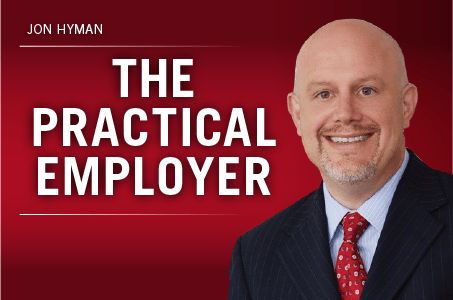There is no doubt that America is in the grips of a prescription drug crisis. You cannot turn on the news without seeing a story about the dangers of opioid addiction.
And prescription medications, including dangerous opioids, provide risk for employers. The ADA’s reasonable accommodation obligations for employee medical conditions extends to the medication prescribed to employees to treat those conditions. Thus, an employer can be liable for failing to accommodate an employee’s use of legally prescribed medications.
For example, the EEOC recently sued a Georgia medical center for disability discrimination after it fired a physician for revealing that he was treating chronic neurological and musculoskeletal problems with legally prescribed narcotics. The lawsuit alleged that the employee supplied a doctor’s note explaining that he was being treated for chronic pain with a prescribed narcotic, and further explaining that he was subject to urine tests and monitoring via the Georgia Board of Pharmacy to ensure compliance with his treatment plan.
The employer, however, allegedly assumed that the medication rendered him unable to meet his job requirements and failed to engage in the interactive process with this employee to determine whether he could perform the essential functions of his job with, or without, reasonable accommodation based on the medical certification.
How is an employer supposed to maintain a safe workplace and lawfully test for legally prescribed drugs that could impair an employee’s performance? Consider these four thoughts.
Blanket prohibitions are illegal. The ADA imposes on employers an obligation to make individualized inquiries about implications such as reasonable accommodations and direct threats. A blanket prohibition against on-the-job use of prescription medications violates this obligation.
Drug testing. Drug testing programs can include legally prescribed drugs. An employer cannot, however, have a blanket policy excluding from employment any employee testing positive for a prescribed drug. Instead, following a positive test, the employer should ask if the employee is taking any prescribed drugs that would explain the positive result.
Drug-free workplace policies. It is permissible to include prescription drugs in drug-free workplace policies. These policies can require employees to disclose prescription drugs that may adversely affect judgment, coordination, or the ability to perform job duties. After disclosure, an employer must, on a case-by-case basis determine whether it can make a reasonable accommodation to enable the individual to remain employed.
Post-disclosure handling. After an employer learns that an employee is taking a prescription drug that may affect job performance, it should request a medical certification regarding the effect of the medication on the ability to safely perform essential job functions. That certification will enable the employer to engage the employee in the interactive process and making the individualized determination of whether a reasonable accommodation is even possible.
What about marijuana? Currently, medically prescribed marijuana is lawful in 25 states plus the District of Columbia. Does the ADA treat marijuana like any other legally prescribed drug, limiting an employer’s ability to terminate for marijuana use?
Thankfully for employers, every state and federal court that has examined this issue so far (and, granted, the sample size is small), the answer is no, employers have no duty to accommodate disabled employees’ lawful use of medical marijuana.
Why? Because even though the use might be lawful under state law, federal law still criminalizes it. The ADA does not protect an employee currently using illegal drugs as a qualified individual with a disability.
Moreover, the ADA does not consider testing for illegal drugs to be a protected medical examination. Thus, the ADA does not restrict how or when an employer tests for illegal drugs, or what employer chooses to do with the results.
As a result, every court that has examined the issue so far has concluded that an employer can enforce a drug-free-workplace or zero-tolerance policy against off-duty marijuana use.
The bottom line for legal drugs? The ADA is all about engaging in conversations and avoiding assumptions. When dealing with an employee’s medications, silence on an employer’s part equals liability. When an employee presents for duty with a prescription medication, ask, certify, verify and, if possible, accommodate.
If you cannot make a reasonable accommodation after engaging the employee, then, and only then, are you free to consider termination.
Jon Hyman is a partner at Meyers, Roman, Friedberg & Lewis in Cleveland. Comment below or email editors@workforce.com. Follow Hyman’s blog at Workforce.com/PracticalEmployer.








